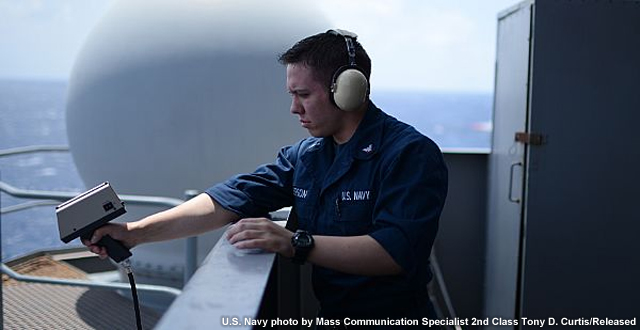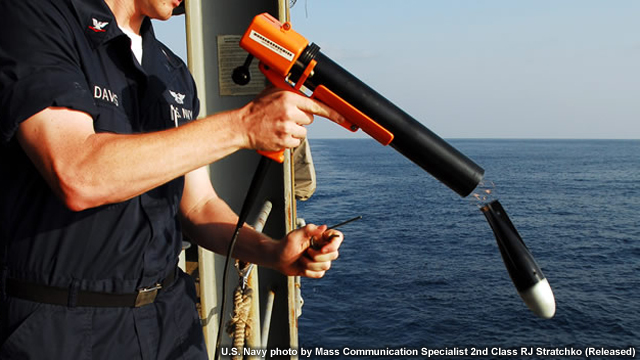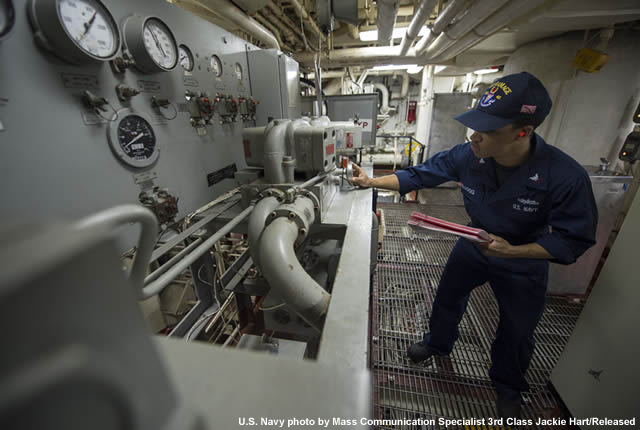Measuring Sea Temperature

Next, you need to get a sea water temperature value.
The sea water temperature is the temperature of the sea surface layer, or the first few feet of water depth. It is most commonly measured via the water intakes in the machinery room or by using an infrared gun.

In very few cases, a bathythermograph might be used to obtain sea temperatures. A bathythermograph is a specialized device that holds a temperature sensor and a transducer to measure changes in water temperature as a function of depth. The instrument is lowered into water as the ship is underway.
The bathythermograph is lowered by a small winch into the water and records pressure and temperature changes as it is dropped through the top layers of the water. The wire holding the sensor is let out until it reaches the predetermined depth, then the sensor is drawn back to the surface. If the resulting temperature observation was taken within 15 minutes of the scheduled observation time, the temperature recorded in the surface layer of the water can be used as the sea water temperature.

In practice, most sea water temperatures can be determined by injection or condenser intake temperatures in the machinery room with the most accurate sea water injection readings. A Machinist's Mate can provide you this information. You should use your experience and knowledge of appropriate sea water temperature ranges to determine the validity of the measurement.
